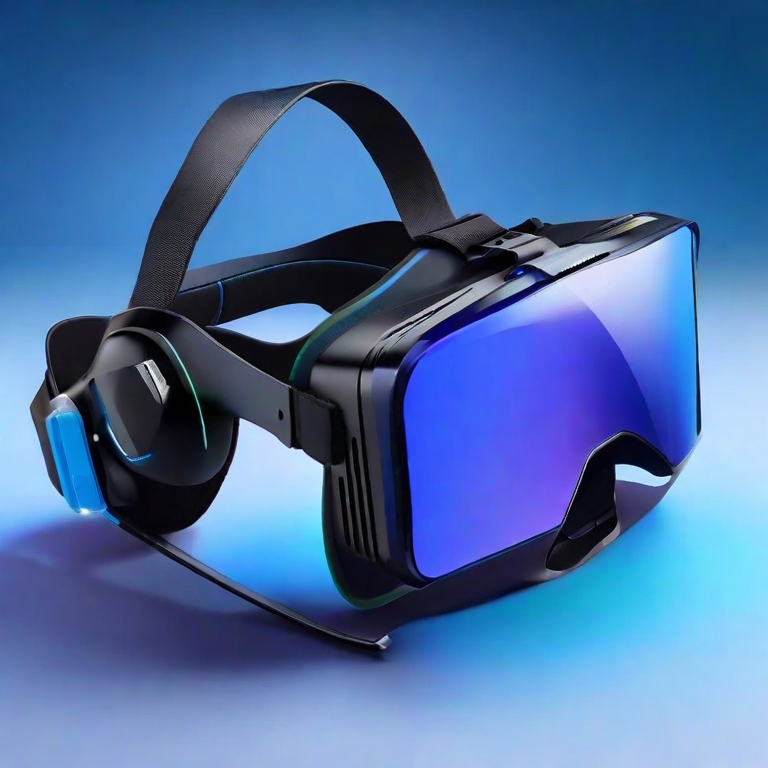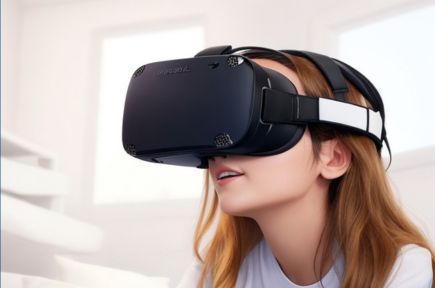Virtual Reality (VR) has emerged as one of the most exciting and innovative technologies of the 21st century. It allows users to immerse themselves in simulated environments and interact with them as if they were real.
VR headsets are the primary tools that make this immersive experience possible. Among the various technical aspects that contribute to a seamless VR experience, the frame rate plays a crucial role.
In this article, we will explore what the frame rate of a virtual reality headset indicates and why it is vital for an optimal VR experience.

Understanding Virtual Reality (VR) Headsets
What is a Virtual Reality Headset?
A VR headset is a wearable device that users put on their heads to experience virtual reality. It typically consists of a high-resolution display for each eye, built-in motion sensors, and sometimes external tracking devices.
The headset tracks the user’s head movements and adjusts the displayed images accordingly, providing a realistic and immersive experience.
How Do VR Headsets Work?
VR headsets work on the principle of stereoscopic imaging. Each eye receives a slightly different image, mimicking the way humans perceive depth in the real world. The motion sensors track the user’s head movements, enabling them to look around and interact with the virtual environment.
The Importance of Frame Rate in Virtual Reality
Definition of Frame Rate
Frame rate, measured in frames per second (FPS), refers to the number of individual images or frames displayed on the screen in one second. In VR, frame rate represents how many frames the headset can render and display per second. The higher the frame rate, the smoother and more realistic the VR experience becomes.
Frame Rate in Virtual Reality
In virtual reality, achieving a high and consistent frame rate is crucial to create a sense of presence and immersion. Low frame rates can result in a choppy and nauseating experience, commonly known as motion sickness. On the other hand, higher frame rates make the visuals appear more fluid and responsive to the user’s movements.
Impact on Immersion and Comfort
A higher frame rate significantly enhances the feeling of immersion in the virtual world. When the frame rate is low, there’s a noticeable delay between the user’s head movements and the updated images, leading to a disconnection from the virtual environment. Additionally, low frame rates can cause eye strain and discomfort.
Factors Affecting Frame Rate in VR Headsets
Hardware Specifications
The hardware components of a VR headset, including the processor, GPU, and memory, play a critical role in determining the achievable frame rate. High-end VR headsets with powerful hardware can achieve smoother frame rates compared to entry-level devices.
Display Technology
The type and quality of the display used in VR headsets also impact the frame rate. Headsets with higher refresh rates and lower persistence displays offer smoother visuals and reduce motion blur.
Graphics Processing Unit (GPU)
The GPU is responsible for rendering the 3D graphics in VR applications. A powerful GPU can handle complex scenes and maintain a high frame rate, while a weaker GPU may struggle, leading to frame drops.
Content Complexity
The complexity of the VR content being displayed affects the frame rate. Simple scenes with basic graphics will require less processing power and can achieve higher frame rates, while graphically intensive scenes may require compromises in frame rate for better visual quality.
Optimal Frame Rate for a Smooth Experience
Recommended Frame Rates for VR
To provide a comfortable and immersive experience, most VR experts recommend a frame rate of at least 90 FPS. Some high-end VR headsets even support 120 FPS, pushing the boundaries of visual fidelity and realism.
Motion Sickness and Frame Rate
Low frame rates can induce motion sickness in users, leading to discomfort and a negative experience. By maintaining a high frame rate, developers can reduce the likelihood of motion sickness and improve user satisfaction.
Balancing Performance and Visual Quality
Achieving a high frame rate is desirable, but not at the expense of visual quality. Game developers and VR content creators must strike a balance between performance and visual fidelity to offer the best possible experience to users.
Overcoming Frame Rate Challenges
Upgrading Hardware
As technology advances, newer VR headsets with more powerful hardware and improved displays are released. Upgrading to the latest hardware can help achieve higher frame rates and enhance the overall VR experience.
Optimizing Software and Content
Software optimization is crucial for maximizing frame rates. VR developers must optimize their applications to run efficiently on a variety of hardware configurations, ensuring a smooth experience for all users.
Comparison of Frame Rates in Popular VR Headsets
Oculus Rift
Oculus Rift, a pioneer in consumer VR, typically operates at 90 FPS, providing a smooth and comfortable experience for users.
HTC Vive
The HTC Vive also boasts a frame rate of 90 FPS, matching the industry standard for smooth VR experiences.
PlayStation VR
PlayStation VR targets a frame rate of 120 FPS, catering to the needs of console gamers and offering high-quality visuals.
Valve Index
The Valve Index is known for its exceptional performance, offering a frame rate of 144 FPS for an unparalleled VR experience.
Future Trends in VR Headsets and Frame Rates
As technology evolves, VR headsets will likely continue to improve in terms of frame rate and overall performance. With advancements in hardware and display technology, we can expect even higher frame rates, pushing the boundaries of what is possible in virtual reality.
My Opinion
The frame rate of a virtual reality headset plays a vital role in determining the overall VR experience. A high frame rate enhances immersion, reduces motion sickness, and ensures a comfortable and enjoyable time in the virtual world.
As VR technology continues to evolve, achieving higher frame rates will become a standard, elevating the quality of virtual reality experiences.
FAQs
Why is frame rate important in VR?
- Frame rate is crucial in VR as it directly impacts the smoothness and realism of the virtual experience. Higher frame rates improve immersion and reduce motion sickness.
Can low frame rates cause motion sickness in VR?
- Yes, low frame rates can cause motion sickness in VR users, leading to discomfort and an unpleasant experience.
What is the recommended frame rate for VR headsets?
- VR experts typically recommend a frame rate of at least 90 FPS for a comfortable and enjoyable VR experience.
How can developers optimize VR content for better frame rates?
- Developers can optimize VR content by reducing unnecessary graphical complexity, improving rendering techniques, and making efficient use of hardware resources.
What is the future of frame rates in VR headsets?
- With advancements in technology, VR headsets are likely to support even higher frame rates, further enhancing the virtual reality experience for users.


